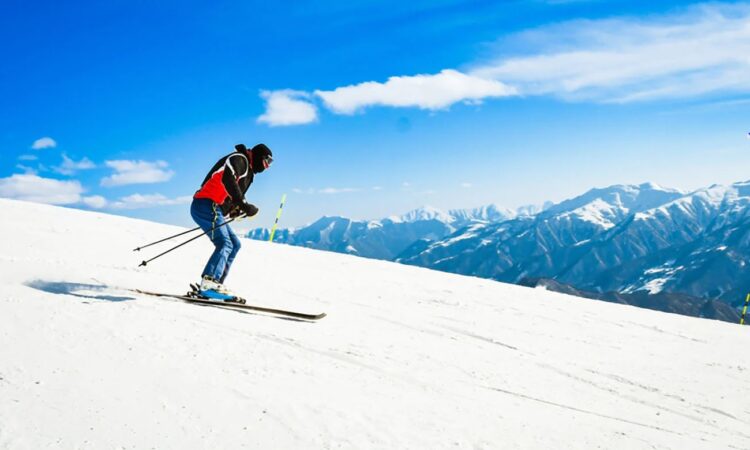
Have you booked a winter holiday to a luxury catered chalet val d isere? Skiing and snowboarding are thrilling winter sports that offer an incredible way to enjoy the snow-capped mountains, but with the excitement comes the need for caution. Whether you’re a seasoned pro or a first-time skier or snowboarder, safety on the slopes should always be a top priority. The thrill of the sport is undeniable, but it’s crucial to understand the risks and take steps to minimise them.
In this blog, we’ll cover essential safety tips to help you stay safe while enjoying your skiing or snowboarding adventure.
1. Know Your Limits and Ski/Board Within Your Skill Level
One of the most important rules of skiing and snowboarding is knowing your skill level and staying within your limits. It can be tempting to challenge yourself on more difficult terrain, but skiing or snowboarding beyond your capabilities increases your chances of injury.
- Beginners: Stick to easier, slower slopes until you feel comfortable with your technique. Take a lesson if you’re new to the sport; instructors can teach you the basics of balance, turning, and stopping safely.
- Intermediate Skiers/Snowboarders: Progress slowly and focus on mastering intermediate slopes before moving on to expert-level trails.
- Advanced Skiers/Snowboarders: Even if you’re skilled, always be mindful of the weather conditions, and understand that advanced runs can be unpredictable, especially with variable snow conditions.
2. Wear the Right Protective Gear
Wearing the correct protective gear is a non-negotiable part of staying safe on the slopes. This includes:
- Helmet: A helmet is a must for both skiers and snowboarders. While the risk of head injury can never be fully eliminated, a helmet reduces the chances of severe head trauma.
- Wrist Guards for Snowboarders: Snowboarders are particularly prone to wrist injuries from falls, so wearing wrist guards can help prevent sprains and fractures.
- Knee Pads, Elbow Pads, and Back Protection: Consider using additional pads for extra protection, especially if you’re a beginner or venturing onto challenging terrain.
- Proper Boots and Bindings: Ensure your ski boots are snug and comfortable. Make sure your snowboard boots are appropriately fitted, and check your bindings for proper adjustment and security.
3. Warm Up and Stretch Before Hitting the Slopes
Skiing and snowboarding are physically demanding activities, and warming up your muscles before starting your day on the slopes can help prevent injury. Cold muscles are more prone to strains and sprains, so take a few minutes to stretch and get your body ready for action.
- Dynamic stretches like leg swings, lunges, and arm circles are great ways to prepare your body for skiing or snowboarding.
- Pay special attention to your lower body and core muscles, which are key for balance and control.
4. Follow the Rules of the Slopes (Skiing/Snowboarding Etiquette)
Skiing and snowboarding are social sports, but safety is paramount. To avoid accidents, follow the rules and etiquette of the slopes:
- Control Your Speed: Always ski or snowboard at a speed that allows you to react to obstacles, other skiers, or snowboarders. Fast speeds reduce your ability to stop quickly or avoid accidents.
- Yield to Uphill Skiers: Skiers and snowboarders below you have the right of way. Always be aware of your surroundings and avoid cutting in front of others.
- Use Designated Trails: Stick to marked trails that are appropriate for your skill level. Don’t stray into off-limits areas or ungroomed terrain unless you’re prepared and experienced.
- Stop in Safe Zones: Avoid stopping in the middle of the trail or in blind spots where other skiers or snowboarders can’t see you. If you need to rest, move to the side of the slope.
5. Check Your Equipment Regularly
Before hitting the slopes, always inspect your equipment to ensure it’s in proper working condition. Faulty gear can be dangerous, leading to injuries or accidents.
- Skiers: Ensure that your skis are properly tuned (sharp edges and smooth bases), and check that your ski bindings are properly adjusted for your height, weight, and skill level.
- Snowboarders: Check your snowboard for any damage to the edges or base. Ensure that your bindings are secure and the board is properly waxed for smooth gliding.
- Boots: Ensure that your boots fit snugly, and check for any signs of wear that could lead to discomfort or injury.
6. Take Regular Breaks to Avoid Fatigue
Fatigue is a major cause of accidents on the slopes. After a few hours of skiing or snowboarding, your reaction time and coordination can start to suffer. To avoid this, take regular breaks to rest, hydrate, and refuel.
- Hydrate: Skiing and snowboarding can be physically demanding, and staying hydrated is crucial. Drink plenty of water throughout the day.
- Eat Properly: Fuel your body with snacks that provide lasting energy, like nuts, fruit, or granola bars. Avoid large meals that could make you feel sluggish or lethargic.
- Listen to Your Body: If you’re feeling tired or dizzy, it’s okay to call it a day early. Overexertion can lead to accidents, and it’s better to take a break than risk an injury.
7. Know How to Fall Properly
Falling is a natural part of learning and even skiing or snowboarding at an advanced level. However, how you fall can make a huge difference in preventing injury.
- For Skiers: If you lose control, try to relax your body and fall to the side, not directly forward or backward. Avoid trying to break your fall with your hands or wrists.
- For Snowboarders: If you fall, try to keep your arms close to your body to avoid wrist injuries. Falling on your buttocks or side is usually safer than trying to catch yourself with your hands.
8. Be Aware of Weather Conditions and Terrain
Weather can change quickly in the mountains, and conditions that were ideal in the morning can shift drastically by afternoon. Always check the weather forecast before you hit the slopes and be aware of any warnings for fog, snowstorms, or icy conditions.
- Visibility: Poor visibility can make it difficult to see other skiers or snowboarders, as well as hazards like rocks or trees. If the visibility is poor, it’s a good idea to slow down and stick to known trails.
- Avalanche Risk: If you plan to ski or snowboard in off-piste or backcountry areas, it’s essential to check the avalanche forecast. Be prepared by carrying avalanche safety gear like a beacon, shovel, and probe.
9. Know How to Handle an Emergency
Despite all precautions, accidents can happen. It’s essential to know what to do if you or someone else is injured on the slopes:
- Stay Calm: If you’re injured, try to stay calm and assess the situation. Avoid moving, especially if you think you’ve hurt your spine or head.
- Signal for Help: If you’re in a remote area, use your phone or any other method to signal for help. Ski patrol can be contacted to provide medical assistance.
- First Aid Knowledge: It’s helpful to know basic first aid, such as how to treat a sprained ankle, dislocated shoulder, or minor cuts and bruises.
Conclusion
Skiing and snowboarding are exciting sports, but safety should always be your top priority. By following these safety tips—knowing your limits, wearing the proper gear, respecting the rules of the slopes, and taking precautions—you’ll maximise your enjoyment while minimizing the risk of injury. Remember that staying safe doesn’t mean sacrificing fun; it’s all about being prepared, being aware, and making smart choices on and off the slopes.




